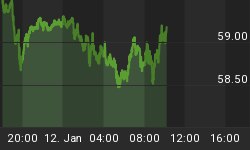Almost three months the day (since December 11) after the Federal Reserve inaugurated its Term Auction Facility (TAF), the central bank invents a new liquidity driving mechanism calling it Term Securities Lending Facility (TSLF) through which it lends $200 billion to its primary dealers. Recall, the Fed had just extended its lending facilities to 28 days after Friday's dismal labor report.
Today's latest coordinated interventions by the Federal Reserve, Bank of Canada, Bank of England, Bank of Japan and bank of Swiss National bank have delivered the short-term equivalent of an inter-meeting Fed cut via the impact on overall market liquidity and resulting increase in risk appetite. The dollar soared across the board as markets eliminated all chances of a Fed intermeeting rate cut, thereby, sparing the currency from further yield erosion from the US central bank. This means the most likely outcome is for the Federal Reserve to stick to a 50-bp rate cut at its scheduled FOMC meeting next Tuesday.
Nonetheless, in light of the increased chances of a US recession, broadening losses in equities and the strong fundamentals in the Eurozone, today's dollar rebound will be short-lived largely against the euro and the yen.
We should remember that the EURUSD hit a fresh all time of $1.5495 following further evidence of improvement in German business confidence. The ZEW investor expectations index improved to 5-month high of -32 in March from -39.5, one week after the IFO index hit a 3-month high in February. The reports are a strong illustration of superior fundamentals, relative to the Fed-driven USD gains, which are unlikely to last. The ZEW survey solidifies the euro's broadening rally by dampening expectations of an ECB rate cut and further damages sentiment in the dollar.
Short-term EURUSD outlook sees downside extending towards $1.5260, followed by 1.5220, at which point we expect renewed gains in the pair ahead of the Fed's anticipated 50-bp rate cut. Upside is seen extending towards $1.5340, followed by the $1.5390-95 region.
Remember December 12th and March 7th?
Just a few days after Friday's post-labor report announcement from the Fed to raise the amount of liquidity in its TAF auctions to $100 bln to "address heightened liquidity pressures in term funding markets", the Fed steps in with a fresh announcement to increase lending by $200 billion. Separately, the ECB has issued a statement indicating it is willing to provide extra dollar liquidity, as it did back in January 22 and Dec 12. Indeed, December 12th was the day to remember, which triggered the US central bank to step inaugurate its Term Auction Facility (TAF) after it had disappointed markets the preceding day (Dec 11) with only a 25-bp rate cut. Despite the Fed's announcement and the ECB's injection of more than $500 billion in liquidity, the resulting stock rally lasted no more than one day (see chart).
The chart also shows that markets are more likely to make a prolonged rally following interest rate cuts -- which aim at lowering the benchmark target of the cost for loanable overnight funds, rather than following term lending facilities that aim at preventing liquidity from falling further.

These liquidity-injection operations may help stabilize the normal functioning of credit markets but will neither soften the loosening in the deteriorating jobs market nor lower the increasing burden on consumers' falling purchasing power in light of rising oil, and negative real average hourly earnings growth.


















